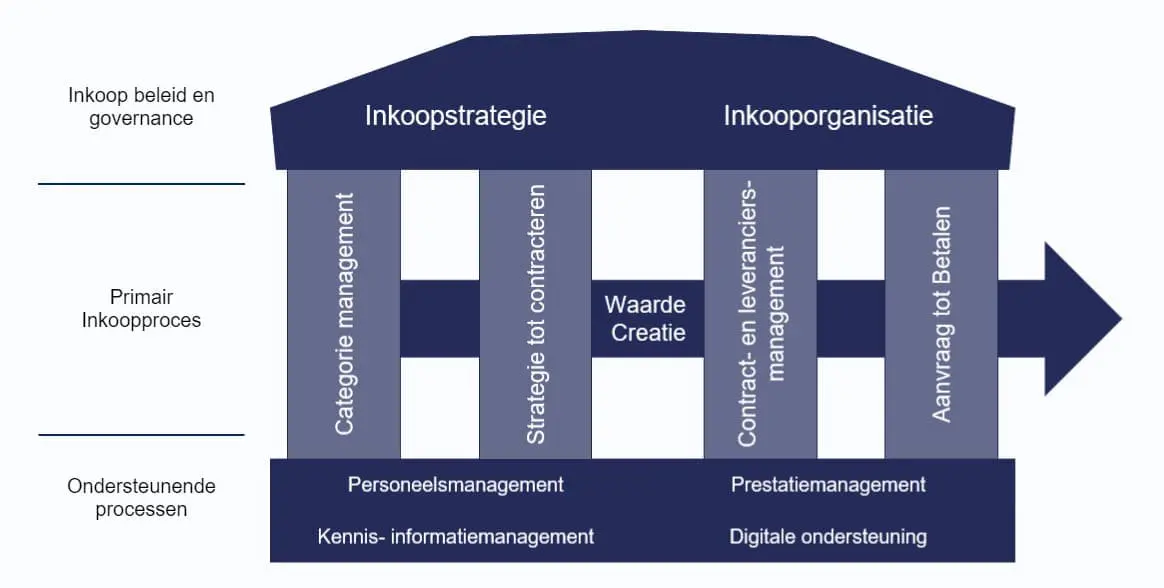Professional Procurement Model
The Professional Procurement Model (PPM) contains our best practices for setting up the procurement function within companies and consists of procurement policy and governance, the procurement process and the underlying procurement infrastructure.

Procurement policy and governance.
An organisation’s procurement strategy and policies are, if done properly, derived from the organisational strategy, which in turn is based on internal and external analysis. A good procurement policy is distinguished by: SMART objectives, focus and clear choices through which everyone in the organisation knows what is expected of them.
The set-up of the procurement organisation largely depends on the size and complexity of what is being procured and on the maturity of the procurement function. Immature procurement functions are characterised by an administrative set-up and are often decentralised. More mature establishments focus on price and costs (commercial orientation) and are often organised more centrally. The most mature procurement organisations focus on value creation. There are company-wide standards and reporting lines and implementation takes place as close to the business as possible.
Primary procurement processes
Every organisation has processes to order and deliver products and services. More professional organisations order as much as possible under contract and selectively manage contracts and suppliers. The most mature procurement organisations implement category management and look at what is needed together with the business owners over several years and at a strategic level.
- Category management focuses on establishing and implementing a long-term sourcing strategy (make it yourself, outsource, hire, do it together) and looks 3-5 years ahead. This is done by procurement category, allowing for a better response to the specifics of the supplier market for that category. The aim of category management is to maximise added value and minimise risk, human and environmental impact and costs.
- Source to contract focuses on drawing up a tender strategy, conducting market research (RFI), tendering/procurement (RFP), selecting the best supplier and concretising the approach and plans in order to subsequently contract the supplier. View the IT value Contract management model.
- Contract and supplier management focuses on situational management and managing (the performance of) contracts and suppliers to ensure that you get maximum value for money throughout the lifecycle of the contract and/or the relationship with the supplier. View the IT value sourcing model.
- Request to pay focuses on the call-off of goods and services under existing contracts, receipt, quality control/performance statement and subsequent settlement of invoices.

Support processes
- Personnel management focuses on drawing up and implementing the strategic, tactical and operational personnel plan including the plan – progress – assessment cycle based on personal development plans and result agreements and the corresponding training plans.
- Knowledge and information management focuses on making available the right knowledge and information about the internal customers, the market and its own processes.
- Performance management focuses on defining, cascading, monitoring and adjusting on the basis of (critical) performance indicators. Procurement-specific components of this function are reports on supplier performance and procurement expenditure.
- Digital support is about providing tools for conducting auctions, tenders, contract management and management, supplier management and the order-to-pay process.
See also our research on the e-procurement software market.